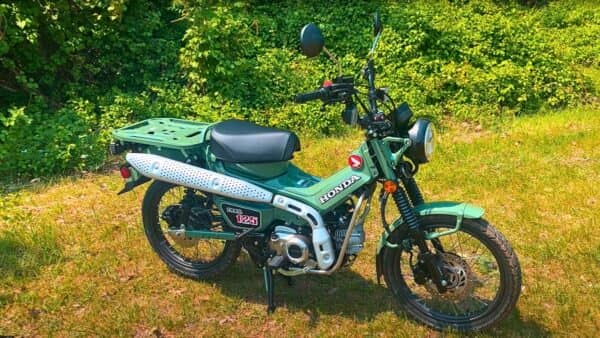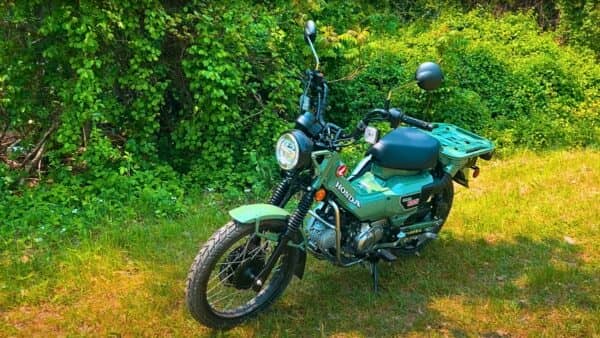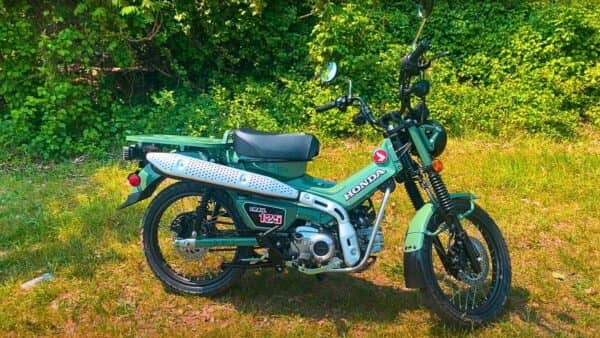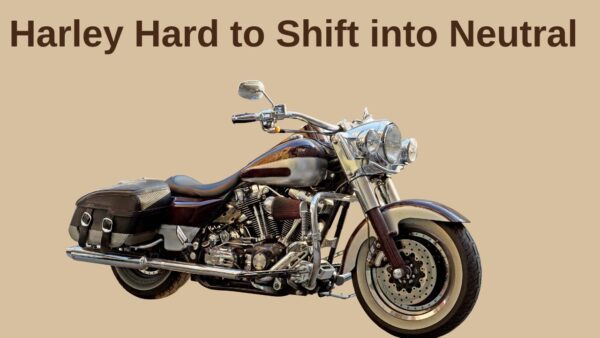The Honda Trail 125, though celebrated for its unique blend of durability and versatility, is not without its share of issues.

While it boasts reliable performance, numerous owners have reported certain problems that require attention.
From mechanical issues to design flaws, these difficulties can affect the overall riding experience.
In this article, we will dive into these common problems, providing insightful information for current owners and potential buyers alike.
Honda Trail 125 Problems
Some owners have reported issues with the bike’s suspension, claiming that it lacks the necessary damping for more aggressive off-road riding.
The small size of the Trail 125 makes it uncomfortable for taller riders, particularly on longer journeys.

Furthermore, the bike’s limited power might not suit those looking for a more dynamic riding experience.
1. Solid Seat
The Honda Trail 125, while a remarkable machine in many aspects, poses certain challenges, one of them being its solid seat.
A motorcycle must have a comfortable seat for short rides and long-distance journeys. Unfortunately, the solid seat is not designed with long-term comfort in mind.
Riders often complain about discomfort during extended rides due to the seat’s lack of proper cushioning and ergonomic design.
While some riders can manage, for others, especially those who use the bike for long journeys, this can be a significant issue.
Upgrading the seat can be an effective solution. There are several aftermarket seats available that offer more comfort, better cushioning, and a more ergonomic design.
2. Jerky Transmission
This problem is characterized by sudden and unpredictable shifts when changing gears, which can be disconcerting and potentially dangerous, especially for new riders.
This jerky transmission can occur due to a variety of factors. It may be a result of low transmission fluid, old fluid, or a lack of fluid pressure.
In some cases, it can also be a sign of more serious mechanical issues, such as a faulty transmission control module.
To address this issue, start by checking the level of your transmission fluid. If it’s low, you’ll need to fill it to the appropriate level.
However, if the fluid is discoloured or has a burnt smell, it might be time to change it entirely.
If the problem persists even after changing the fluid, it’s advisable to bring your bike to a professional.
3. Lack of Speed
One notably common complaint among Honda Trail 125 owners revolves around the bike’s lack of speed.
With a top speed of around 60 mph, it might seem underpowered, especially when you’re trying to navigate more rugged terrain or keep up with the flow of traffic on faster roads.

This lack of speed is primarily due to the bike’s engine: a 125cc air-cooled, single-cylinder four-stroke engine.
Although it’s designed for reliability and fuel efficiency, it does not churn out a great deal of power.
As a remedy, some owners opt for aftermarket modifications or “mods” to boost the bike’s speed.
Related: Honda NC700X Problems
Traditional approaches are swapping the stock sprockets for ones with a different ratio, upgrading the exhaust system for better airflow, or even replacing the carburettor with a higher-performing model.
However, keep in mind that these modifications may not only void your warranty but can also put additional strain on the engine, potentially reducing its lifespan.
4. Irregular idling
This issue can manifest as fluctuating revs, stalling, or an engine that’s running too fast, and it’s typically caused by issues with the bike’s idle control system.
The idle control system comprises several parts, such as the ICV, throttle body, and IAC valve. If any of these components are clogged, damaged, or misaligned, it can lead to irregular idling.
To troubleshoot, you should need to inspect the throttle body, ensuring it is clean and functioning properly.
If it is clogged with dirt or grime, use a throttle body cleaner spray to clean it. Next, inspect the IAC valve. It should move freely without any hindrance.
If you find it stuck or if there’s carbon build-up, it needs cleaning with a carburettor cleaner or replacement if it’s damaged.
Check the ICV. If it’s defective or damaged, it should be replaced. In some cases, a simple cleaning might do the job.
5. Absence of High Leverage
This motorcycle model, albeit renowned for its versatility and agility, falls short when it comes to providing the rider with high leverage.
The lack of high leverage in the Honda Trail 125 means that you may experience difficulties in handling or controlling the bike, especially at high speeds or on challenging paths.
This could potentially result in increased physical fatigue and decreased riding comfort.
To mitigate this issue, you might consider aftermarket modifications, such as installing handlebar risers for better control.
6. Electrical System Issues
These issues primarily pertain to the motorcycle’s ignition system and the battery. Some owners have reported difficulty in starting the motorcycle, especially in cold weather.
This issue could be related to the ignition switch or the spark plug. If the bike does not start or takes several attempts, check these components for any signs of damage or wear and tear.
Another common problem lies with the bike’s battery. Some users have mentioned the battery draining faster than usual, necessitating frequent recharges.
Ensure the battery is in good condition and fully charged before you set off on your journey. If the battery continues to drain rapidly, it may need replacement.
7. Ineffective Braking
The brakes, especially in the earlier models, seem to lack the desired stopping power. This could be due to the brake pads wearing out faster than expected or potential issues with the brake fluid.
Brake pads are a critical component in the braking system, and their deterioration could lead to ineffective braking.
Regular inspection of brake pads for signs of wear and tear is vital. If the pads appear worn out or thinner than 1/4 inch, it might be time to replace them.
Another potential reason could be the hydraulic brake fluid, which transfers the force of a driver’s foot on the brake pedal to the wheel brakes.
If the fluid is low or is not of the right specification, the braking effectiveness can be compromised. Ensure that the brake fluid is at the correct level and is clear in colour.
For Owners of Honda Trail 125
Team Motorbike Dude tried their best to cover every problem with the Honda Trail 125 that the owner faced in past.
But still, we are eagerly ready to update the post if any of the owners face a different problem that we missed in this article.
So feel free to share your thoughts on these problems with their potential fixes and recommendations by Motorbike Dude.
If you have fixed a little bit issue on your own then we will be happy to feature your recommendation on this website.
Contact us in the comments, and send feedback via emails or social channels where you feel comfortable.

Ahtsham Younas is a passionate blogger and content writer. He loves to ride motorcycles and learn the mechanical process behind the motorcycles.
He has been writing articles in the motorcycle industry since 2019 and has learned many things about motorbike niches.


